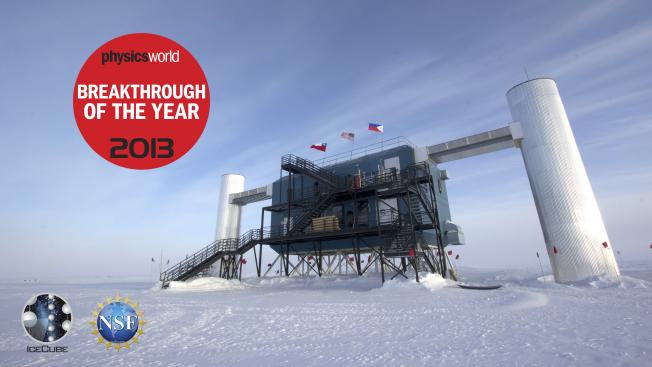Fermi gamma-ray `bubbles' from stochastic acceleration of electrons
(2011)
Limits on neutrino emission from gamma-ray bursts with the 40 string IceCube detector.
Phys Rev Lett 106:14 (2011) 141101
Abstract:
IceCube has become the first neutrino telescope with a sensitivity below the TeV neutrino flux predicted from gamma-ray bursts if gamma-ray bursts are responsible for the observed cosmic-ray flux above 10(18) eV. Two separate analyses using the half-complete IceCube detector, one a dedicated search for neutrinos from pγ interactions in the prompt phase of the gamma-ray burst fireball and the other a generic search for any neutrino emission from these sources over a wide range of energies and emission times, produced no evidence for neutrino emission, excluding prevailing models at 90% confidence.Dark matter profiles and annihilation in dwarf spheroidal galaxies: prospectives for present and future gamma-ray observatories - I. The classical dSphs
ArXiv 1104.0412 (2011)
Abstract:
Due to their large dynamical mass-to-light ratios, dwarf spheroidal galaxies (dSphs) are promising targets for the indirect detection of dark matter (DM) in gamma-rays. We examine their detectability by present and future gamma-ray observatories. The key innovative features of our analysis are: (i) We take into account the angular size of the dSphs; while nearby objects have higher gamma ray flux, their larger angular extent can make them less attractive targets for background-dominated instruments. (ii) We derive DM profiles and the astrophysical J-factor (which parameterises the expected gamma-ray flux, independently of the choice of DM particle model) for the classical dSphs directly from photometric and kinematic data. We assume very little about the DM profile, modelling this as a smooth split-power law distribution, with and without sub-clumps. (iii) We use a Markov Chain Monte Carlo (MCMC) technique to marginalise over unknown parameters and determine the sensitivity of our derived J-factors to both model and measurement uncertainties. (iv) We use simulated DM profiles to demonstrate that our J-factor determinations recover the correct solution within our quoted uncertainties. Our key findings are: (i) Sub-clumps in the dSphs do not usefully boost the signal; (ii) The sensitivity of atmospheric Cherenkov telescopes to dSphs within 20 kpc with cored halos can be up to ~50 times worse than when estimated assuming them to be point-like. Even for the satellite-borne Fermi-LAT the sensitivity is significantly degraded on the relevant angular scales for long exposures, hence it is vital to consider the angular extent of the dSphs when selecting targets; (iii) No DM profile has been ruled out by current data, but using a prior on the inner dark matter cusp slope 0<=gamma<=1 provides J-factor estimates accurate to a factor of a few if an appropriate angular scale [abridged]Dark matter profiles and annihilation in dwarf spheroidal galaxies: prospectives for present and future gamma-ray observatories - I. The classical dSphs
(2011)
Time-Dependent Searches for Point Sources of Neutrinos with the 40-String and 22-String Configurations of IceCube
ArXiv 1104.0075 (2011)



